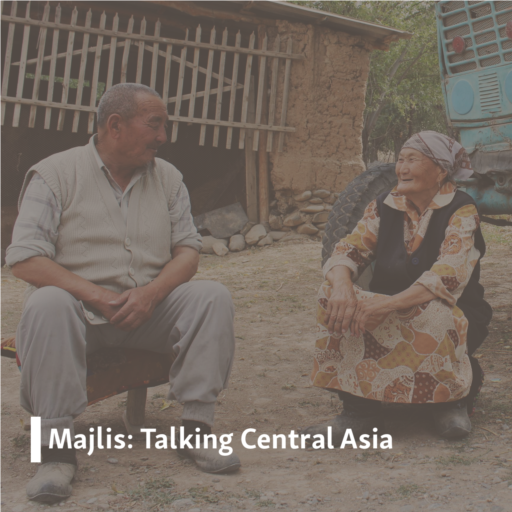An investigation by RFE/RL’s Uzbek Service revealing a secretive government mountain retreat was able to link the sprawling, murkily financed compound to Uzbek President Shavkat Mirziyoev based on interviews with multiple sources familiar with the project and corroborating evidence obtained by an independent activist.
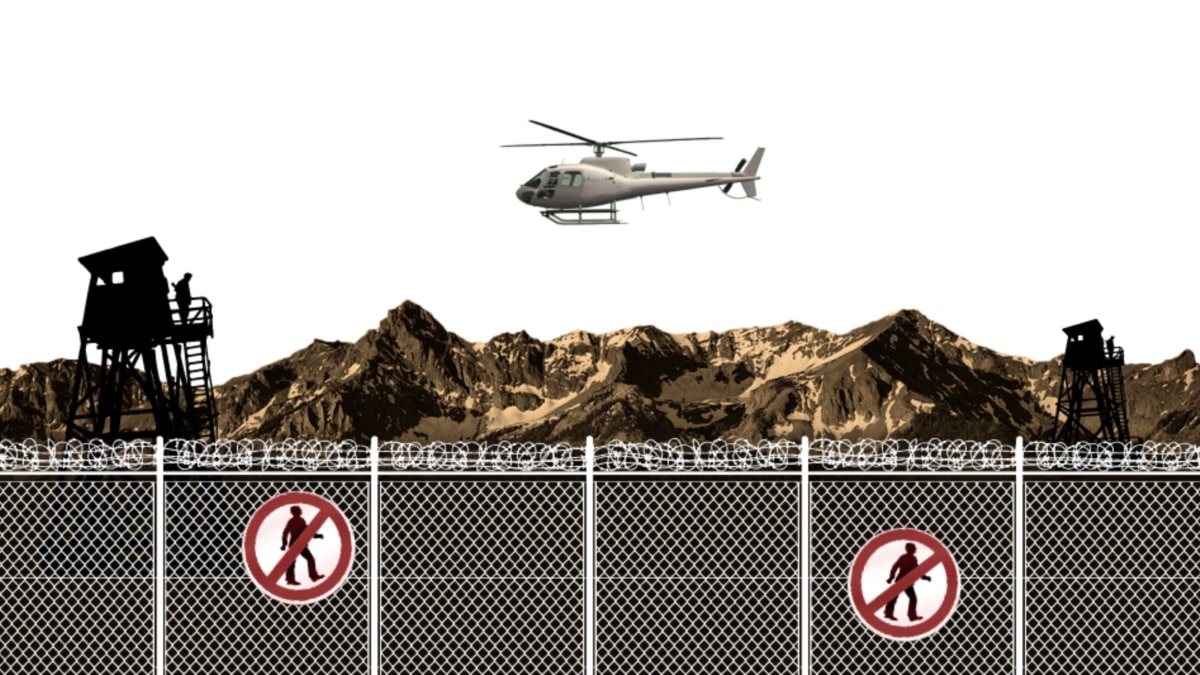
A 'Classified' Uzbek Resort Fit For A President
The Uzbek government has never disclosed the cost or purpose of a sprawling, secretive resort that locals refer to as the "dacha" of President Shavkat Mirziyoev. A new investigation suggests it might have cost hundreds of millions of dollars.
Open-source information explicitly linking Mirziyoev or his administration to the compound -- which is sealed off from the general public by roadblocks and security personnel -- is sparse.
People who worked on the construction site said they had their phones confiscated upon arrival, and reporters could find no photographs in the public domain showing Mirziyoev at the property. The compound’s thin paper trail leads back to the state-owned Uzbekistan Railways -- which controls the protected land on which it was built -- and state-owned contractors.
But there is one notable feature that the compound -- known on paper as the “Shovvozsoy recreation area,” after the nearby river -- has in common with other residences used by Mirziyoev and highlights its importance to the Uzbek government: a no-fly zone.
The remote mountain retreat falls within one of six zones in the country that the Uzbek government has designated as prohibited airspace, according to an analysis of airspace-management data and regulations by RFE/RL’s Uzbek Service and C4ADS, a Washington-based nonprofit research group.
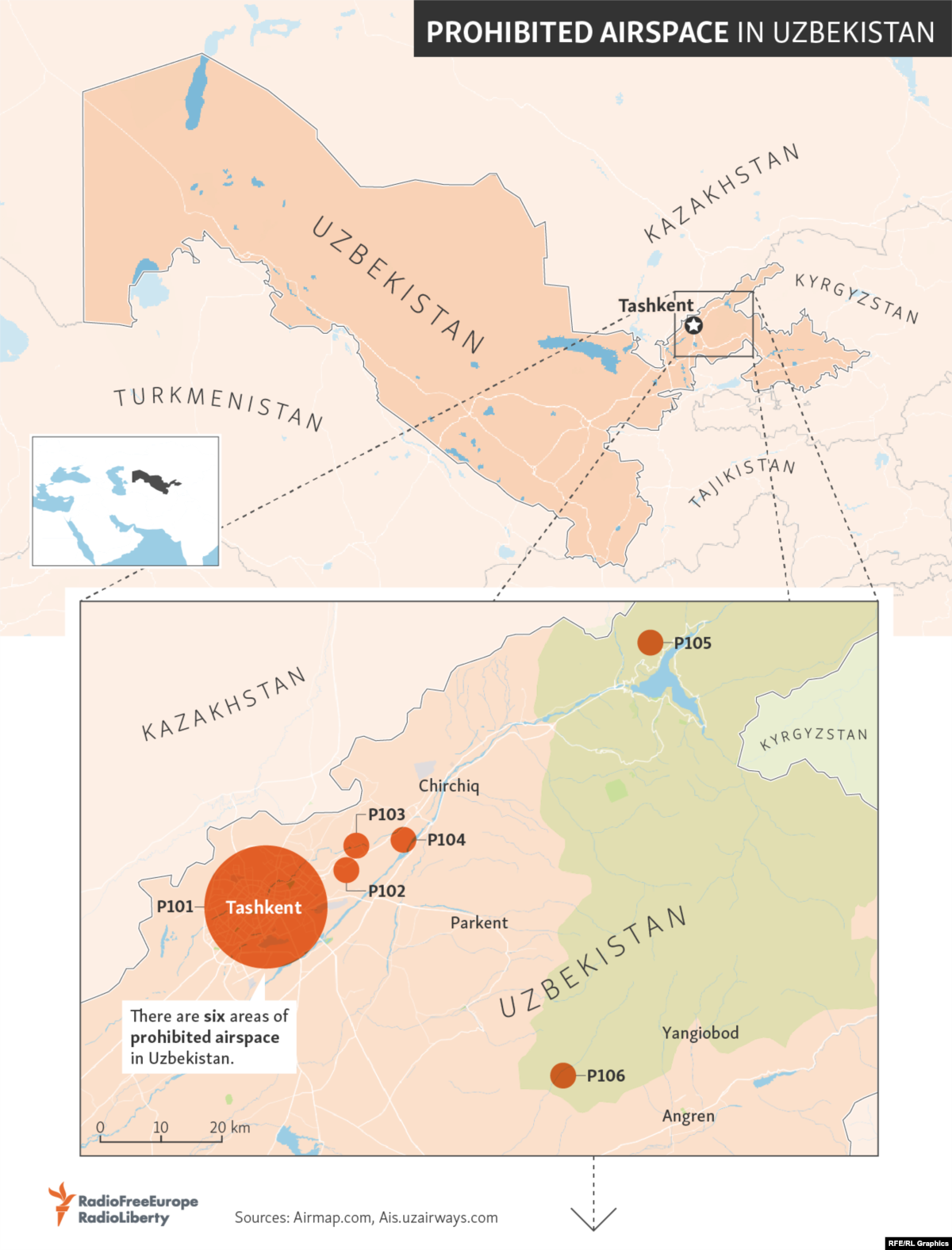
In addition to the mountain compound, located in an area known as Shovvozsoy, five known presidential residences are located on territory covered by these no-fly zones, according to the Uzbek government’s official Aeronautical Information Publication, updated in December.
One zone with prohibited airspace does not cover an area known to include one of Mirziyoyev’s residences. But it does include Uzbekistan’s Nuclear Physics Institute.
Each of these six zones is assigned a sequential alphanumeric code beginning with the letter “P.” An employee of the Uzbek Civil Aviation Agency told a reporter that “P” zones are established by the Defense Ministry.
“The radiuses are usually from two to five kilometers. There are mostly presidential residences, with one exception, [the settlement of] Ulugbek, where the nuclear institute is located,” the employee said.
“Aircraft may be allowed to cross this airspace only in extreme weather situations. Otherwise flying over is completely forbidden,” the employee added.
Here’s a look at the six zones that Uzbekistan has designated as prohibited airspace.
The Secretive Shovvozsoy Resort
The center of this prohibited airspace is located on a stretch of the mountain compound’s landscaped territory, a little over 200 meters from two helicopter pads and about 350 meters from the mansion that sources said was built for Mirziyoev’s use.
The prohibited airspace has a two-kilometer radius from that point, encompassing the entire compound. It stands out for its remoteness in a mountainous area with only sparsely populated villages in the surrounding areas.
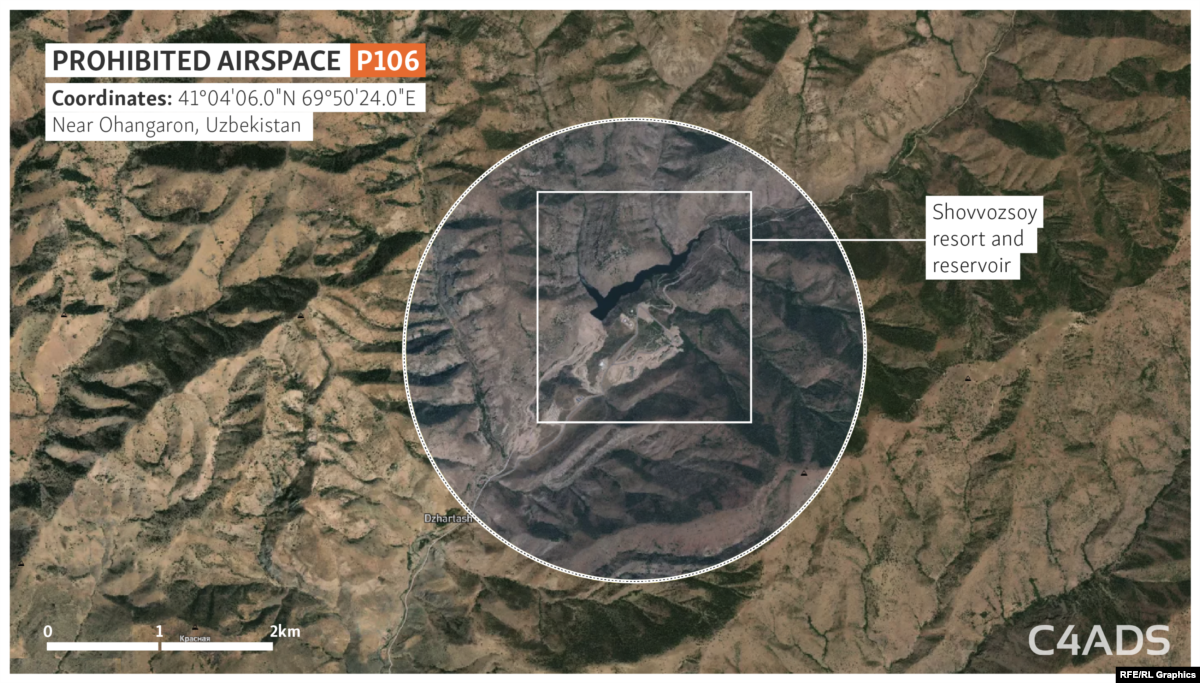
Reporters were unable to determine exactly when officials established the no-fly zone at the Shovvozsoy resort. (One Uzbekistan Railways manager said the resort’s construction had been classified as “secret.”)

'Our Father's Dacha': How An Uzbek Activist Sniffed Out The President's 'Secret'
When Uzbek activist Aleksei Garshin asked a manager at the state-owned contractor about a clandestine mountain resort linked to President Shavkat Mirziyoev, he was told its construction had been "classified as secret."
The construction of the resort, which includes a newly built reservoir and whose cost sources estimated at several hundred million dollars, began in 2017 and was largely completed the following year.
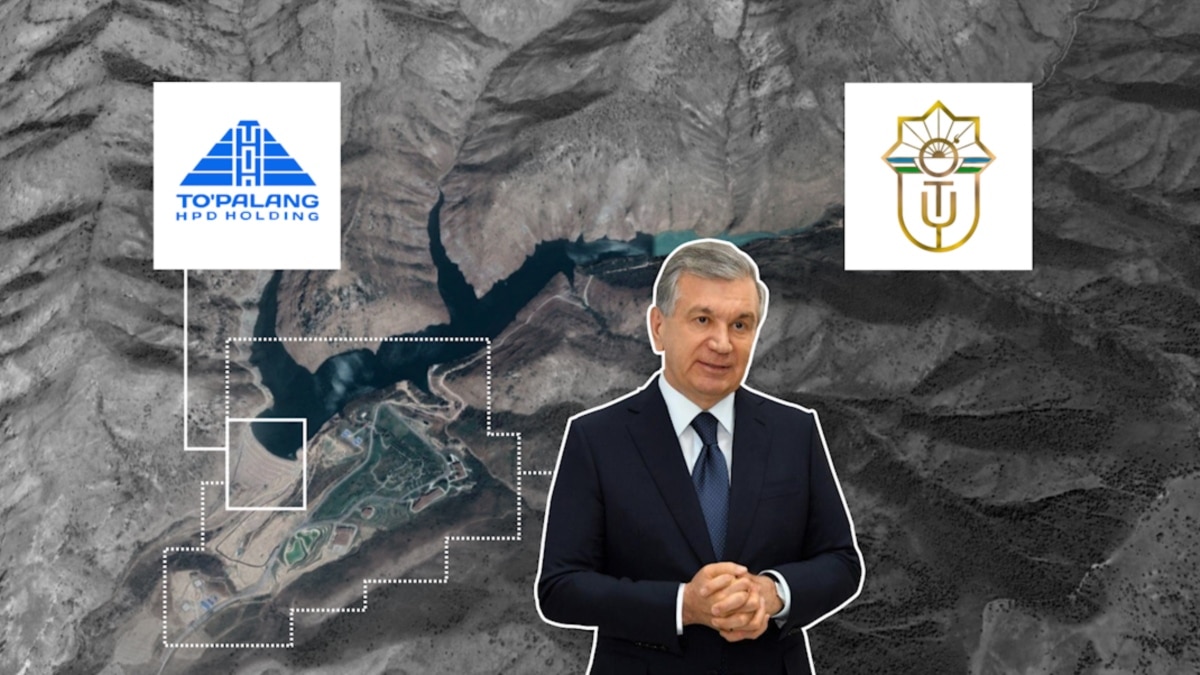
The Mysterious Presidential Reservoir That Left Uzbek Villagers Dry
There is virtually no public information about a new reservoir built next to a secret mountain compound belonging to Uzbek President Shavkat Mirziyoev, including how much it cost or what its purpose is. Villagers downstream say the reservoir's construction disrupted their water supply.
The first indications of helicopter pads at the site were visible by satellite as of January 2017, and in October 2018, a local official noted the helicopter access to the area in an interview with RFE/RL’s Uzbek Service.
The Qaynarsoy Residence
This prohibited airspace, with a two-kilometer radius from the center, covers the territory of Mirziyoev’s Qaynarsoy residence, located on the 256-hectare Burchmulla forestland in the Tashkent region’s Bostanlyk district. The residence served as the main out-of-town retreat for Mirziyoev’s predecessor, authoritarian President Islam Karimov, who died in 2016.
The residence is still at the disposal of the presidential administration, according to a March 18, 2019, decree by Uzbek Prime Minister Abdulla Aripov.
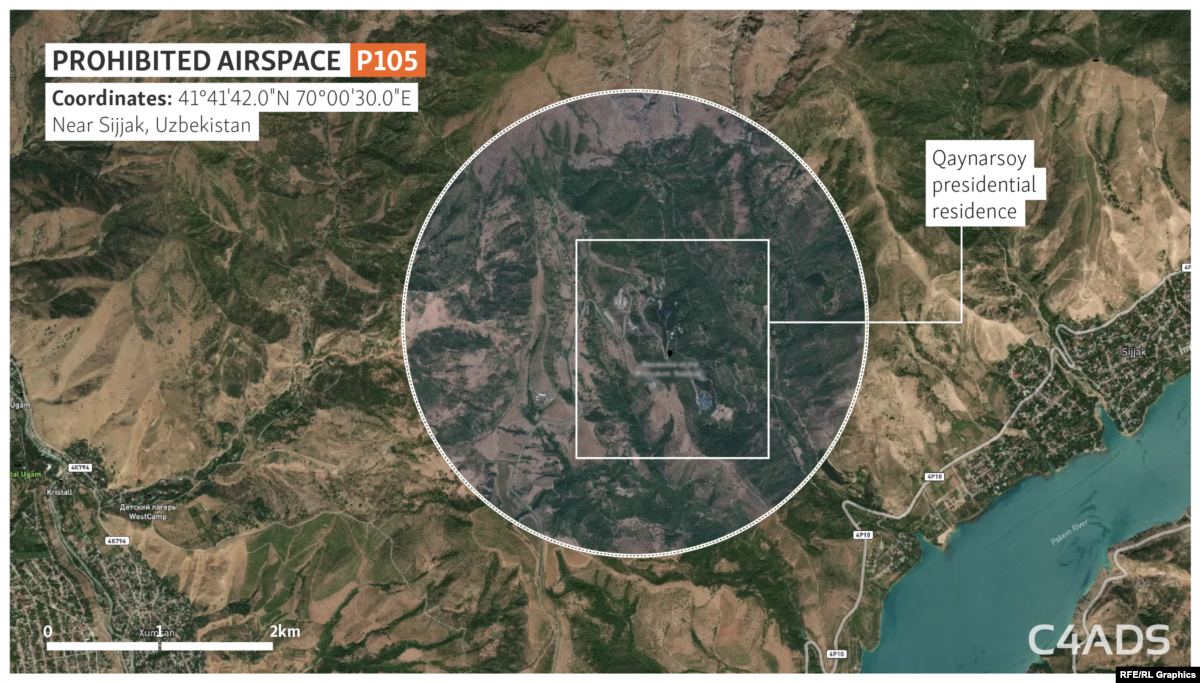
It’s unclear how often Mirziyoev takes advantage of the Qaynarsoy residence. In September 2018, he was accompanied to the retreat by Belarusian President Alyaksandr Lukashenka, who came to Uzbekistan for an official visit.
State Belta agency correspondents accompanying Lukashenka reported that the Qaynarsoy complex, located 900 meters above sea level on the Charvak Reservoir in the foothills of the Tien Shan, features a helipad and a special port for boats.
Residents of the area near the Qaynarsoy retreat told RFE/RL that roads leading to the residence are still closed to the public and that the property itself is heavily guarded.
In 2017, dozens of homes were razed in the Baytqorgon neighborhood of Tashkent’s Qibray district to make way for a new residence for Mirziyoev and widen the roads leading to it, as RFE/RL’s Uzbek Service reported at the time.
The Baytqorgon residence is not included on the list of official residences cited in Aripov's March 2019 decree. But the prohibited airspace above it indicates the importance the government puts on the property.

The Nuclear Physics Institute
Reporters were unable to find any residence linked to Mirziyoev in this prohibited-airspace zone, located within the settlement of Ulugbek. The no-fly zone, however, covers Uzbekistan’s Nuclear Physics Institute.
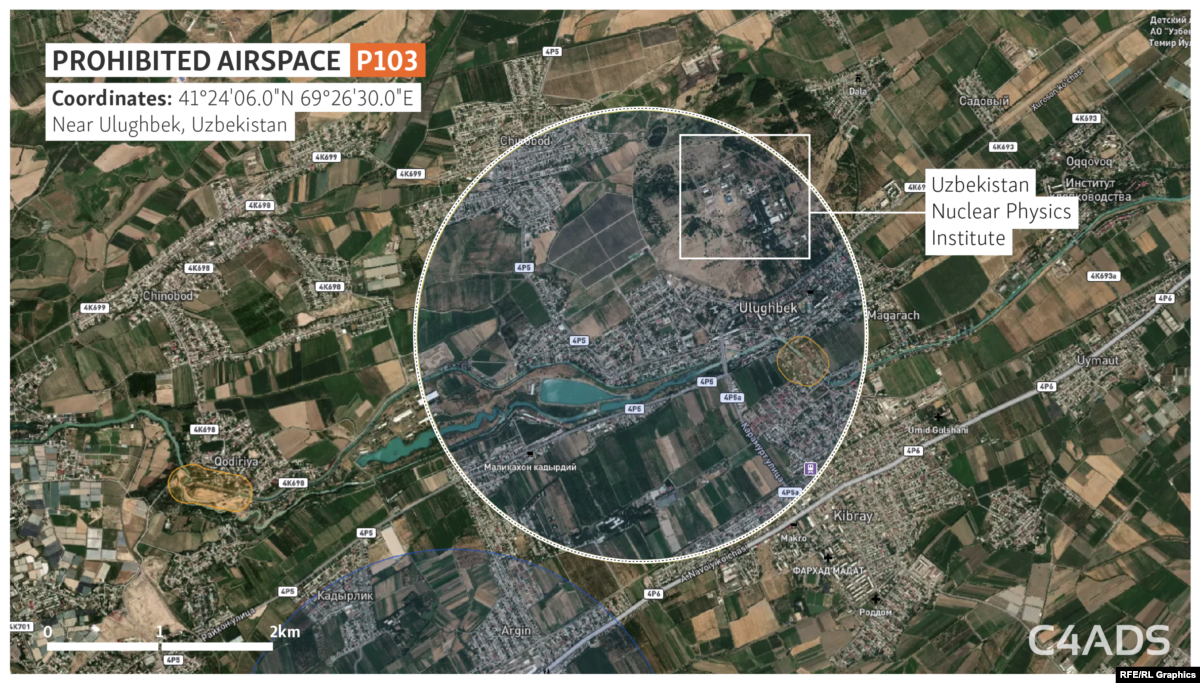
The Twin Residences: Dormon And Kuksaroy
This no-fly zone overlaps with two presidential residences in the Tashkent region’s Qibray district, one of which was the main residence of Karimov prior to his death.
That 2,500-square-meter mansion, known as the Dormon residence, was shunned by Mirziyoev for reasons that have never been publicly disclosed. Mirziyoev instead reportedly worked in the Uzbek Senate building while renovating a property across the road known as the Kuksaroy residence, which became his main office and a place to receive visiting foreign officials.
Both properties are included on the list of presidential residences featured in Aripov’s March 2019 decree.
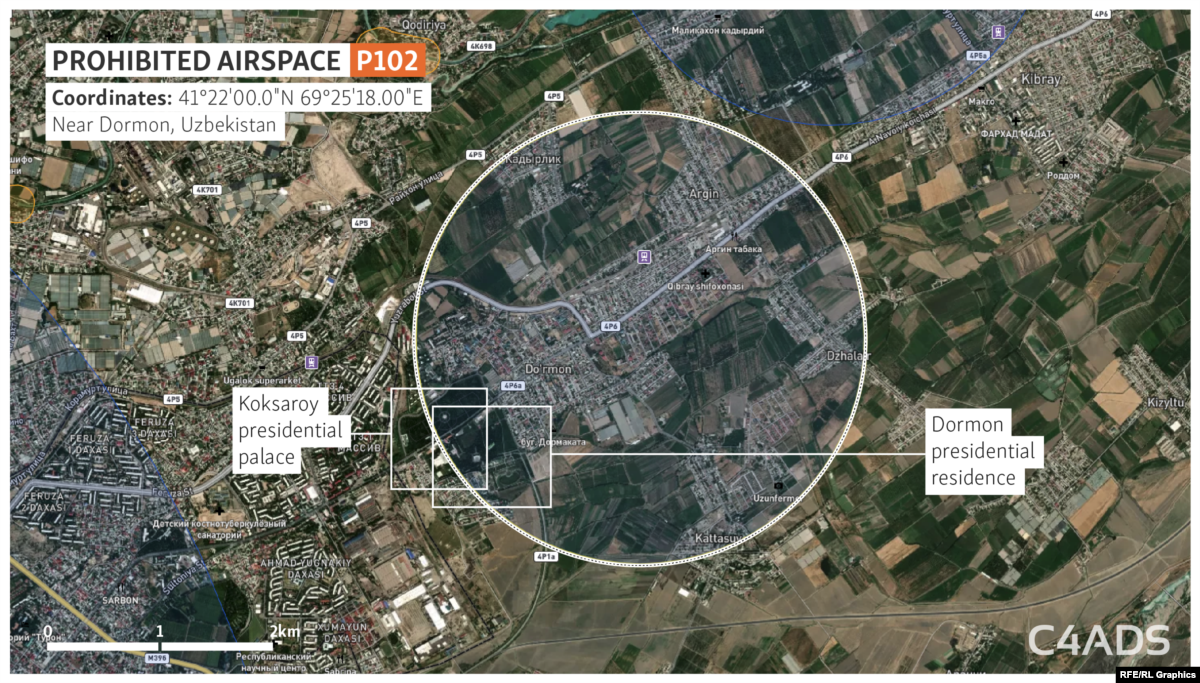
Mirziyoev also had a new residence built about five kilometers east of the Dormon and Kuksaroy properties. Mirziyoev reportedly moved into that property, known as the Qorasuv residence, on the eve of his birthday on July 24, 2017.
Official records indicate that the Karasuv property is the main residence of Mirziyoev and his family, though it is not covered by prohibited airspace, according to the Uzbek government’s official Aeronautical Information Publication.
Tashkent And The Qorasuv Residence
This is the largest prohibited-airspace zone in Uzbekistan, covering almost all of Tashkent with a 10-kilometer radius from the center point -- including most of the territory of Mirziyoev’s Qorasuv residence
The zone includes an exemption for air traffic to and from the Tashkent International Airport, which Mirziyoev renamed in honor of Karimov in May 2017. This is the only no-fly zone for which the Uzbek government’s official Aeronautical Information Publication offers a description of a facility or infrastructure that it covers. It mentions the Tashkent airport, but not the Qorasuv residence.
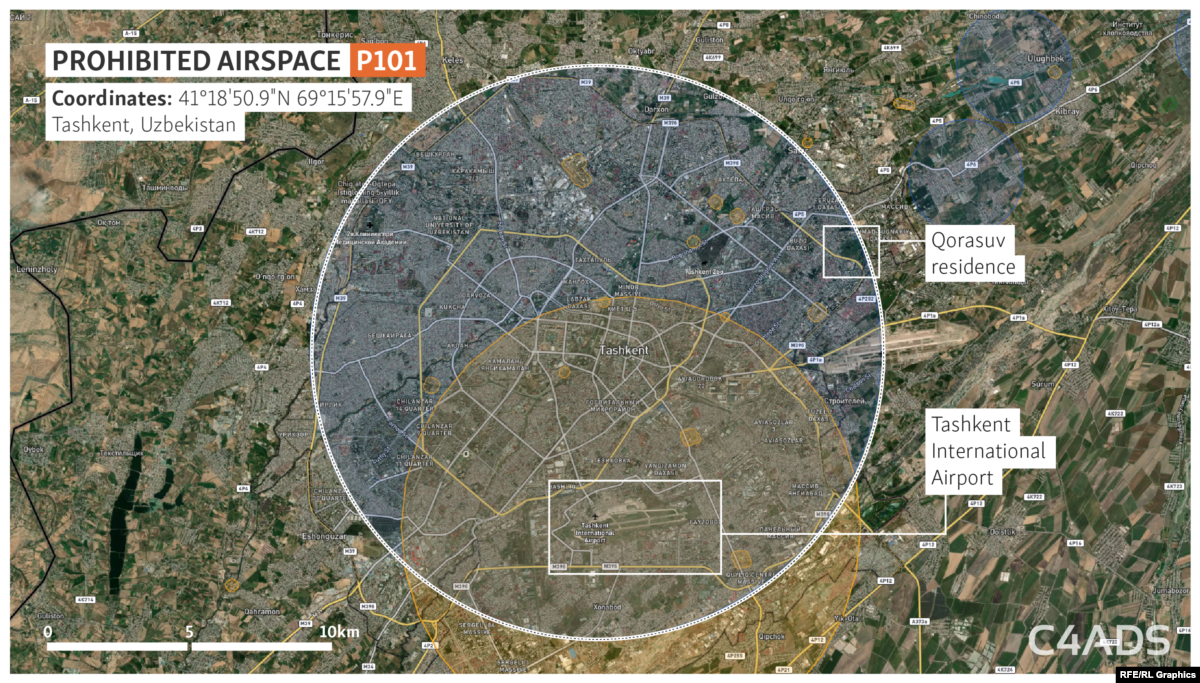
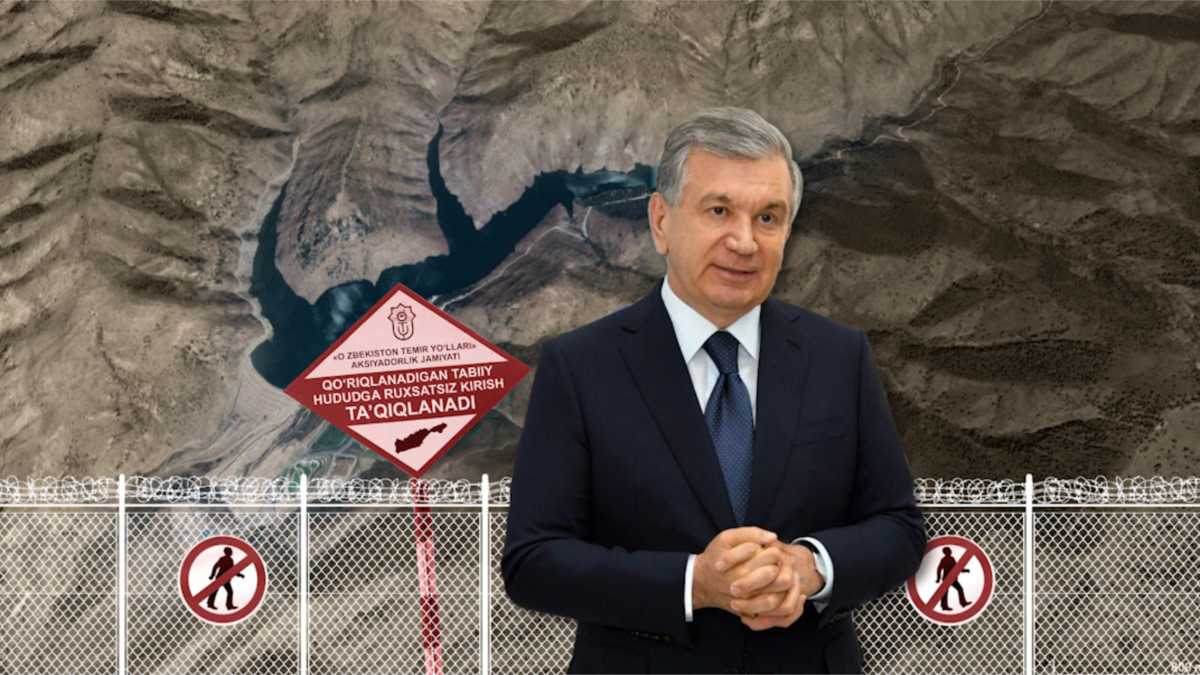
The Uzbek President's Secret Mountain Hideaway
An opaquely financed resort, including a new reservoir, was built in the Uzbek highlands and is protected by guards and a no-fly zone. A new investigation reveals its links to President Shavkat Mirziyoev, who has spoken publicly about the need for government transparency.
